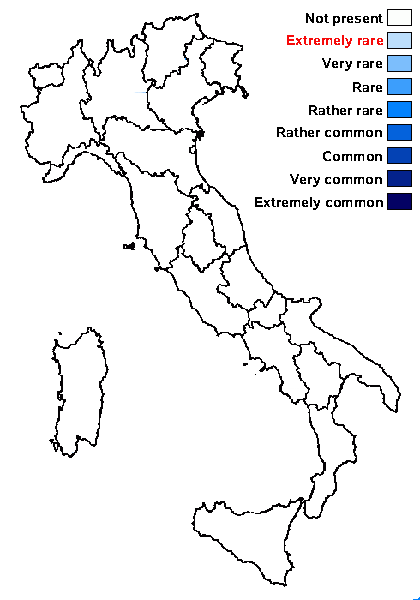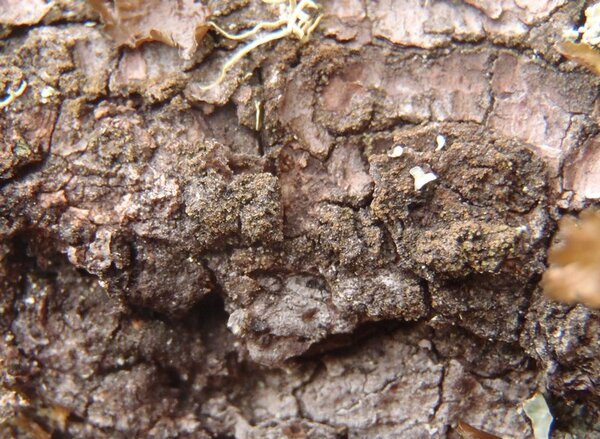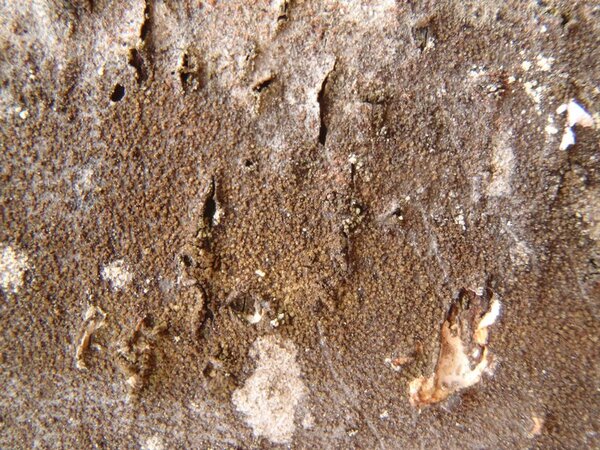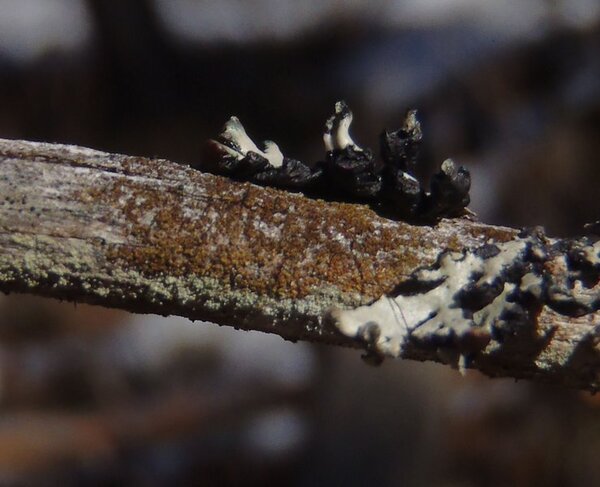Japewia subaurifera Muhr & Tønsberg
in Tønsberg, Lichenologist, 22: 206, 1990
Synonyms:
Distribution:
Description: Thallus crustose, endo- to thinly episubstratic, continuous to areolate, greenish brown, sorediate, forming small, up to 2 cm wide patches which sometimes become confluent, rarely delimited by a thin, brownish prothalline line. Esorediate parts indistinctly areolate, the areoles rounded to irregular in outline, flat to slightly convex, up to 0.15 mm wide. Soralia medium to dark brown externally, yellow to yellowish green internally, at first well-delimited, punctiform, more or less convex, up to 0.4 mm across, later often confluent into a thicker, subleprose crust; individual soredia up to 30 µm wide, sometimes aggregated into up to 75 µm wide consoredia; external soredia surrounded by a layer of brown, convex cells, the pigment K+ fuscous brown. Apothecia rare, biatorine, chestnut brown, epruinose, up to 0.4(-0.6) mm across, flat to rarely markedly convex when old, soon immarginate. Proper exciple reduced, weakly gelatinized, of radially arranged, branched and anastomosing hyphae, the outer rim reddish brown and K+ fuscous brown; epithecium reddish brown, K+ fuscous brown; hymenium colourless to yellowish brown, up to 75 µm high, inspersed with oil droplets, K/I-; paraphyses coherent, branched and anastomosing, the apical cells c. 2-5 µm wide, with a brown cap, the pigment deposited outside the cell wall; hypothecium colourless to pale yellowish brown, with yellowish oil droplets. Asci 8-spored, subglobose to broadly ellipsoid, with a well-developed amyloid tholus, a non-amyloid wall and an amyloid outer cap. Ascospores 1-celled, hyaline, ovate-ellipsoid, ellipsoid or subglobose, 11-20 x (8-)12-13(-14) µm, the wall 1.5-3 µm thick, surrounded by a gelatinous perispore. Photobiont chlorococcoid. Spot tests: external soredia K+ fuscous brown, internal soredia K- or K+ pale yellow, P-, C-, KC- or KC+ fleeting pale orange, UV- or UV+ white (in specimens with lobaric acid). Chemistry: xanthones of the secalonic acid-group, eumitrin, sometimes lobaric acid.Note: on acid bark of both broad-leaved and coniferous trees in moist habitats; widespread in the Holarctic region, with a few scattered records from the Alps, outside the Italian territory: to be looked for in the Italian Alps.
Growth form: Crustose
Substrata: bark
Photobiont: green algae other than Trentepohlia
Reproductive strategy: mainly asexual, by soredia, or soredia-like structures (e.g. blastidia)
Most common in areas with a humid-warm climate (e.g. most of Tyrrenian Italy)

Predictive model


Curtis Randall Björk - CC BY-SA 4.0
British Columbia, British Columbia, Clearwater Valley, On dead Alnus, riparian forest. 2014-05-03.
Herbarium: Holotype
Growth form: Crustose
Substrata: bark
Photobiont: green algae other than Trentepohlia
Reproductive strategy: mainly asexual, by soredia, or soredia-like structures (e.g. blastidia)
Most common in areas with a humid-warm climate (e.g. most of Tyrrenian Italy)

Predictive model


 Index Fungorum
Index Fungorum
 GBIF
GBIF



